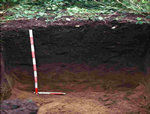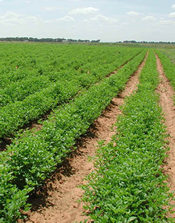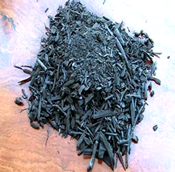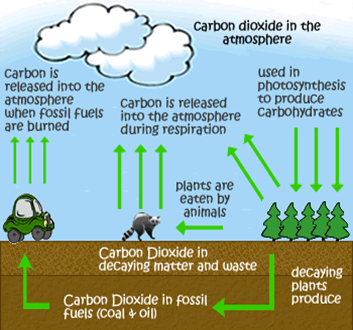
 |
 |
| Projects |
| Sustainability |
| What You Can Do |
| Public Appearances |
| News and Events |
| Issues |
| SOS Press |
| Reading Room |
| Links/Resources |
| About SOS |
| People of SOS |
| Contact Us |
| Site Map |
| Home Page |
| Biochar |
— Biochar —
To view and print our biochar literature please click on the links below:
Introduction to Biochar | Biochar Then & Now | Biochar Production | Soil & Water Benefits of Biochar | Biochar & Forests | Renewable Energy & Biochar | Biochar & Climate Change
What if there were a real-life answer to help solve the real world problems of climate change, peak oil, and global food security? Would you want the leaders of the G8 and the G20 to know about it and endorse it? To learn more click here.
For discussions, information or to share information with biochar enthusiasts and practitioners throughout the Northwest please visit the Pacific Northwest Biochar Initiative Group at http://groups.google.com/group/pnw-biochar?hl=en.
Support the "WECHAR" Bill
On Thursday, September 24th, 2009, Senator Harry Reid of Nevada, and four co-sponsors (Senators Max Baucus and John Tester of Montana, Senator Orrin Hatch of Utah and Senator Tom Udall of New Mexico), introduced the "Water Efficiency via Carbon Harvesting and Restoration (WECHAR) Act of 2009. The bill establishes a loan guarantee program to develop biochar technology, initiates a program of biochar landscape restoration projects on public land and authorizes a competitive grant program to fund research on biochar characteristics, impacts and economics. To learn more or to send a letter of support please click here.
What is Biochar?
A Zero Waste Solution - Biochar is a fine-grained charcoal made by pyrolysis. Pyrolysis means heating biomass (wood, manure, crop residues, solid waste, etc..) with limited to no oxygen in a specially designed furnace that captures all emissions, gasses and oils for reuse as energy.
An Ancient Soil Conditioner - Biochar has been used in agriculture for more than 2,500 years.1 Biochar is now being reintroduced to modern horticulture as a safe, sustainable soil amendment.
How Does Biochar Enhance Soil and Protect Water Quality?
Increased Nutrient and Water Retention - Biochar outshines all other organic soil material in its ability to attract and retain water and nutrients, as well as hold phosphorous and agrochemicals.2 So plants are healthier and fertilizers leach less into surface- or groundwater.
Persistence - Biochar is relatively inert; therefore, far more persistent in soil than any other organic soil additive.3 Because biochar persists 100's to 1000's of  years, all its benefits of nutrient and water retention and overall soil porosity last unlike common fertilizers and conditioners.
years, all its benefits of nutrient and water retention and overall soil porosity last unlike common fertilizers and conditioners.
Less Fertilizer Needed - When added to soil, biochar improves plant growth and crop yields while it reduces the total fertilizer needs. Nitrous oxide (NO2) released from certain fertilizers is 310 times more potent a greenhouse gas than CO2. Biochar-conditioned soils have 50-80% reductions in NO2 emissions.4
How Can Biochar Fight Climate Change?
Burning fossil fuels releases excessive CO2 into the atmosphere. Also, decomposition or open burning of biomass releases CO2 back into the atmosphere. Minimizing human-caused CO2 and taking CO2 out of the atmosphere are ways to combat climate change.
A Perfect Circle Solution - Burning biomass through pyrolysis to produce energy (heat and power) instead of using fossil fuels is a carbon neutral process; it neither adds to the climate change problem nor reverses it.
Biochar holds 50% of the biomass' carbon. When biochar is applied to soil, that carbon is sequestered for centuries. Thus biochar reduces the overall atmospheric CO2 by removing carbon from the active cycle and sequestering it. Biochar also enhances plant growth, which takes more CO2 out of the atmosphere. Overall, these benefits make the biochar process carbon negative5 as long as biomass production is managed sustainably.
What Else Do We Get By Making Biochar?
Biochar production is fully scalable. Pyrolysis ovens are becoming available in all sizes, mobile and stationary: from cooking stoves or furnaces for household use in developing countries, to on-site mobile ovens for forest restoration, to industrial-sized units for power generation and heating in the rural-urban interface.
Combined Heat and Power (CHP) - Heat and power produced during pyrolysis can generate electricity and provide heat for individual homes or industries and communities.
Biofuels - Combustible gases, including hydrogen, are captured during pyrolysis. This syngas is a valuable fuel that can be sold or used on-site for energy production. Bio-oil is another valuable energy product produced during pyrolysis.
Solid Waste Conversion - Tipping fees, the loading of landfills and open burning are avoided because bio-waste becomes a marketable product. This also reduces CO2 and methane emissions from landfills.
 From Waste to Income - A once worthless and costly byproduct (in most cultures) is now a valuable resource. Through biochar, biomass becomes a sustainable and value-added product for urban and rural agriculture and forest communities while creating jobs, improving soil and reducing forest fire hazards.
From Waste to Income - A once worthless and costly byproduct (in most cultures) is now a valuable resource. Through biochar, biomass becomes a sustainable and value-added product for urban and rural agriculture and forest communities while creating jobs, improving soil and reducing forest fire hazards.
Carbon Offsets - Carbon credits are valuable assets for sale or trade in the offset and cap-and-trade markets.
What's Biochar Worth?
- Biochar is being sold as a soil amendment for $500 per ton or $12.50/50 lbs. plus shipping.
- Carbon credits sold by sequestering carbon from biochar production are economically competitive when carbon prices reach $38/ton CO2e. Carbon sells at +$35 in European markets.
- Syngas and bio-oil markets are evolving. To date, most pyrolysis manufacturers retain these by-products for on-site energy production.
- Forest fire hazard reduction is another avoided cost, however it's difficult to financially quantify.
- Costs, savings and benefits vary by region and situation. Studies of community-sized operations with multiple stakeholders predict a return on investment within three years. Industrial size applications are more costly.
- Current research focuses on the avoided costs from biochar's ability to: nourish soils and increase crop yield, protect water quality; protect air quality from avoided burning; and the production of alternative energy while co-producing pyrolysis by-products.
- As biochar technology becomes more widespread and carbon prices increase, the economics will further improve.
For More Information...
The International Biochar Initiative (IBI) provides for the international exchange of information and activities in support of biochar research, development , demonstration and commercialization. It advocates biochar research, development, demonstration and commercialization. It advocates biochar research and applications around the world.
Learn more at www.biochar-international.org
To watch a short video on You Tube about pyrolysis and biochar click here.
Learn more about the Blackfoot Clearwater Stewardship Project.
SOS is proud to support Biochar Products. Biochar Products is in the early stages of developing a 10 dry ton per day mobile biochar demonstration plant near Halfway, Oregon. They have also been contacted by the US Forest Service - Rocky Mountain Research Station, out of Missoula, Montana, about setting up a 1-5 DTPD biochar plant for a study of a commercial biochar plant. For further information about this and other projects please visit their website.
Footnotes
1 "Terra Preta"-certain dark highly fertile soils found in the South American Amazon thought to be purposefully created by pre-Columbian Indians 500-2500 years ago.
2Cornell University, Soil Fertility Management Dept. www.css.cornell.edu/faculty/lehmann/research/biochar/biocharmain.html
3Ibid.
4 Rondon, Ramirez, and Lehmann, (2005), "Charcoal additions reduce net emissions of greenhouse gases to the atmosphere"; Proceedings of 3rd USDA Symposium on Greenhouse Gases & Carbon Sequestration, p. 208.
5http://www.biochar-international.org/aboutbiochar/informationaboutbiochar.html International Biochar Initiative.
SOS PRESS | ABOUT SOS | SITE MAP | CONTACT US
© Copyright 2008 Sustainable Obtainable Solutions. All Rights Reserved.

